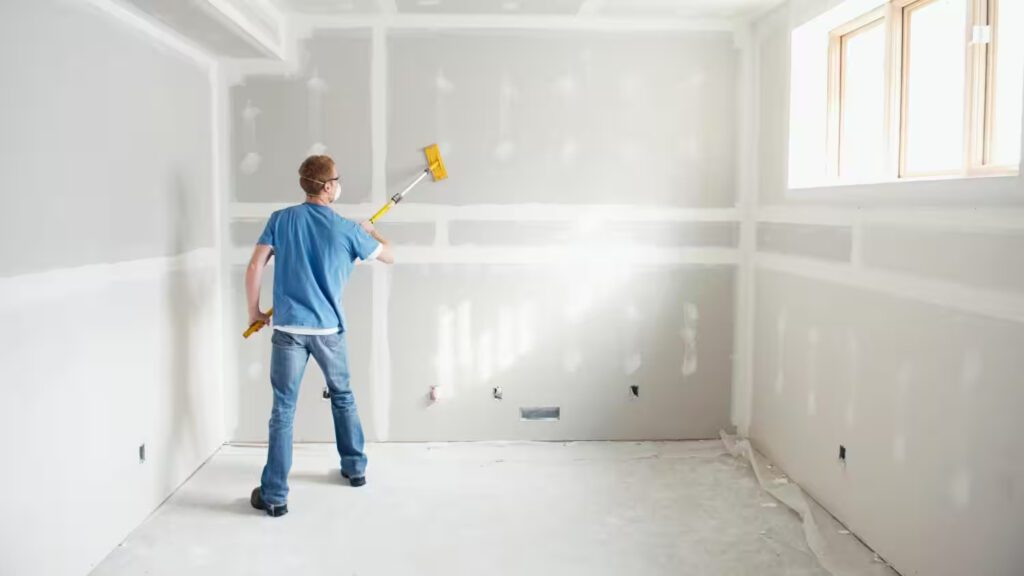Drywall is an essential component of both residential and commercial construction. Used to create interior walls and ceilings, drywall sheets provide a smooth and durable surface for finishing. If you’re planning a renovation or new build, understanding the different types and sizes of drywall will help you choose the best option for your space.
What is Drywall?
Drywall, also known as gypsum board or wallboard, is a flat panel made from gypsum powder that is compressed between two sturdy sheets of paper. It is attached to wood or metal framing using drywall screws or nails to form walls and ceilings. Drywall is a versatile building material used for both structural and aesthetic purposes in homes and commercial properties.
Different Types of Drywall
Selecting the right drywall type is crucial for durability and performance. Here are the main types of drywall to consider:
1. Standard Drywall
This is the most common type of drywall, used for general wall and ceiling applications. It consists of compressed gypsum powder, typically white, with a brown or gray paper backing. Standard drywall is easy to install, finish, prime, and paint, making it a popular choice for most interior spaces.
2. Moisture and Mold-Resistant Drywall
Designed for areas prone to high humidity, this drywall type has a green or blue coating that resists moisture and prevents mold growth. It is ideal for bathrooms, kitchens, laundry rooms, basements, and utility spaces where moisture exposure is frequent.
3. Fire-Resistant Drywall
Made with non-combustible materials such as glass fibers, fire-resistant drywall offers enhanced protection against fire hazards. It is commonly used in apartment buildings, garages, and areas near fireplaces or wood stoves. Due to its density, it also helps with soundproofing, making it a great choice for multi-unit properties.
4. Soundproof Drywall
For rooms where noise reduction is a priority, soundproof drywall is an excellent solution. Constructed with multiple gypsum layers and a sound-dampening adhesive core, it effectively reduces sound transmission. This type of drywall is ideal for home theaters, offices, bedrooms, and shared walls in residential buildings.
5. Plaster Baseboard (Blue Board)
Used primarily in veneer plaster applications, this drywall type has a blue surface that bonds well with plaster coatings. It is moisture-resistant but cannot be taped, mudded, or painted like regular drywall. It is commonly used in high-moisture environments such as bathrooms.
6. Paperless Drywall
Instead of the traditional paper backing, this drywall uses fiberglass, making it more resistant to mold, moisture, and damage. It is a great choice for areas exposed to high humidity or risk of impact, though it comes at a slightly higher cost per square foot.

Choosing the Right Drywall Size
Drywall sheets come in various sizes, with each serving a specific purpose:
4 x 8 feet: The most common size, suitable for general wall and ceiling applications.
4 x 10 feet: Ideal for taller walls and large ceiling areas, reducing the number of seams.
4 x 12 feet: The longest available option, best for rooms with high ceilings to minimize joints and seams.
Drywall Thickness Options
The thickness of drywall sheets determines their strength and application:
1/4 inch: The thinnest option, often used for layering over existing walls to cover imperfections.
3/8 inch: Commonly used for patchwork and repairs, as it is easy to bend and shape.
1/2 inch: The standard thickness for most interior walls, available in lightweight options for easier handling.
5/8 inch: The thickest option, providing fire resistance and excellent soundproofing, often used in ceilings to prevent sagging.
Alternatives to Traditional Drywall
If you’re looking for other wall and ceiling solutions, consider these alternatives:
Wood Panels: Provide a modern, natural look but are heavier and more expensive.
Textured Wall Panels: Add decorative elements while concealing imperfections.
Wahoo Walls: Made from polystyrene foam, they offer insulation benefits and are easy to install.

Professional Drywall & Taping Services in Mississauga & Brampton
At Lifetime Building Services, we specialize in drywall installation, taping, and much more across Mississauga and Brampton. Whether you need a complete drywall setup, repairs, or expert finishing, our team delivers top-quality results.
Frequently Asked Questions
1. What is the standard drywall thickness?
The most commonly used drywall thickness for interior walls and ceilings is 1/2 inch.
2. What is the thinnest drywall available?
The thinnest drywall option is 1/4 inch, typically used for refinishing existing walls or covering minor imperfections.
3. How much does a 4×8-foot sheet of 1/2-inch drywall weigh?
A standard 4×8-foot sheet of 1/2-inch drywall weighs approximately 50 pounds.
4. How long does it take to install drywall in a standard room?
The time needed for drywall installation varies based on room size and complexity. Generally, a professional crew can complete installation in one to two days, including hanging, taping, and initial mudding.
5. How much does popcorn ceiling removal cost?
Popcorn ceiling removal typically costs between $6 to $10 per square foot, though prices may vary based on ceiling height and complexity.
6. Are professional drywall repair services available in Mississauga and Brampton?
Yes, professional drywall repair services are available in both Mississauga and Brampton, providing solutions for any drywall damage and ensuring seamless restoration of your walls and ceilings.
